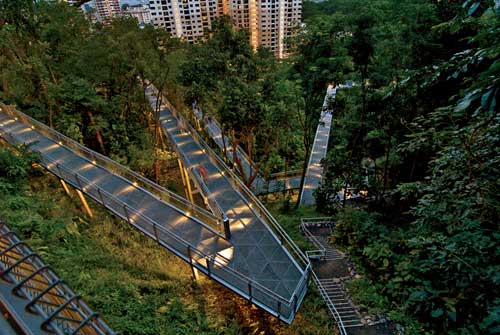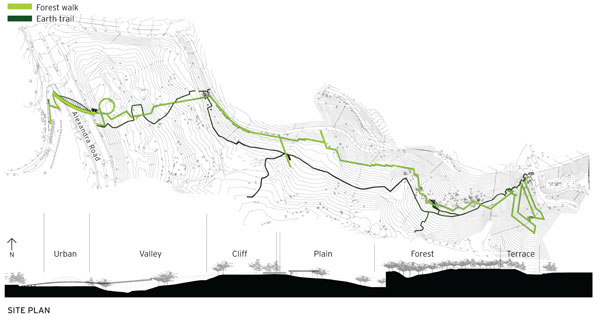Into Thin Air
Learning Objectives:
- Identify building materials used for lightweight construction.
- Explain the advantages of using prefabricated components.
- Discuss the challenges involved in designing temporary structures.
- Discuss innovative uses of glass and acrylic.
Credits:
Long gone are the days when bricks and mortar were the building materials of choice. The solid, imposing structures they produced have given way to lightweight, light-filled assemblies that, whether temporary or not, convey an ephemeral quality as they look to the skies or tread ever so gently on the earth.
One such ethereal project in Singapore meanders through the treetops while leaving as light a footprint as possible on the ground below. Designed by Singapore-based LOOK Architects following an international competition, the project consists of a pedestrian bridge spanning the busy Alexandra Road along the island's southern coast and a zigzagging elevated walkway inside the densely wooded Telok Blangah Hill Park, an area formerly inaccessible to the public.
Completed in 2008, the project, initiated by Singapore's Urban Redevelopment Authority (URA), creates a continuous pedestrian access in this residential area, where high-rise apartment buildings and colonial houses border lush forests. "Singapore is a very dense Asian city," explains Look Boon Gee, cofounder of LOOK Architects, "But there has been a concerted effort by the government to balance development and nature to preserve the natural heritage."
LOOK's park intervention - called Forest Walk - literally goes out of its way to prevent any destruction of its natural setting, snaking around trees to avoid tearing them down. At the same time, it takes advantage of the unique experience of walking through a tree canopy, with up-close views of the wildlife and vegetation, and lookout points to take in the harbor views in the distance.
 |
Forest Walk's 6.5-foot-wide deck meanders through the tree canopy for a close glimpse of wildlife and vegetation (above). Supported on stiltlike columns, Forest Walk rises 200 feet over the course of its nearly mile-long path within the Telok Blangah Hill Park along Singapore's southern coast (below). Photo: © Amir Sultan |










